What They are, How they Came to be, and What Could Befall us Should we Dare Forget Them
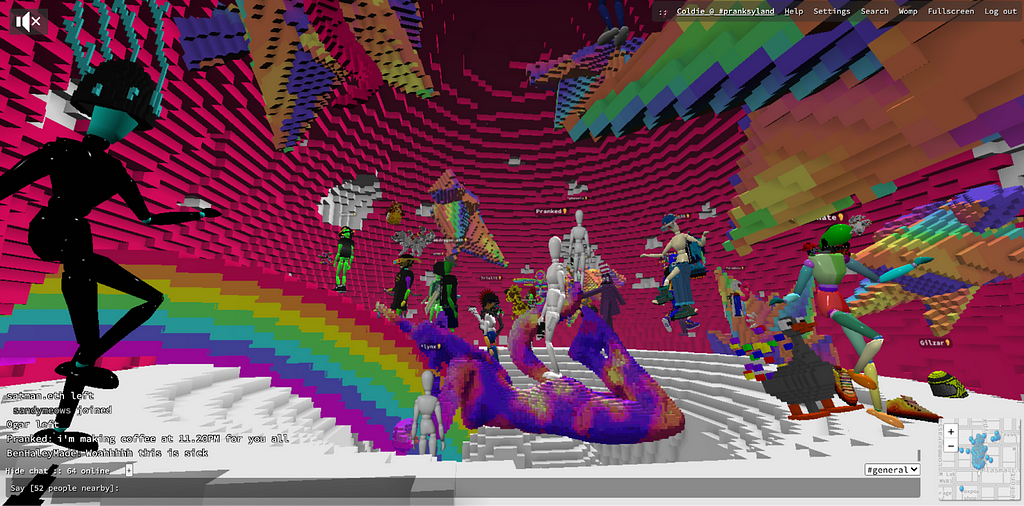
Part 1: I Know What you Think About the Metaverse…
And it’s wrong, all wrong, literally and completely incorrect. Sorry, but if we’re going to do this, you’re going to have to forget everything you think you know about the Metaverse. Okay? Good.
Now we can begin.
You’re wrong about the Metaverse, but it’s not your fault. You’ve only been exposed to a teeny-tiny smidge of what it could be. Or, rather, the thing you believe to be the Metaverse is, in fact, almost entirely unrelated to the Metaverse this essay discusses. The two merely share a name. The Metaverse I’m talking about is an immense and startlingly-powerful concept, one I’ll get into more in a moment. “The Metaverse” that most of us have been exposed to, however, is little more than a marketing buzzword for an otherwise unimpressive product.
Trust me on this: To proclaim oneself disinterested in the Metaverse today is like announcing that you were “out” on the internet back in the year 2000. “Uh-uh, no way, not for me,” many people might have announced. “This internet thing, I just don’t get it!”
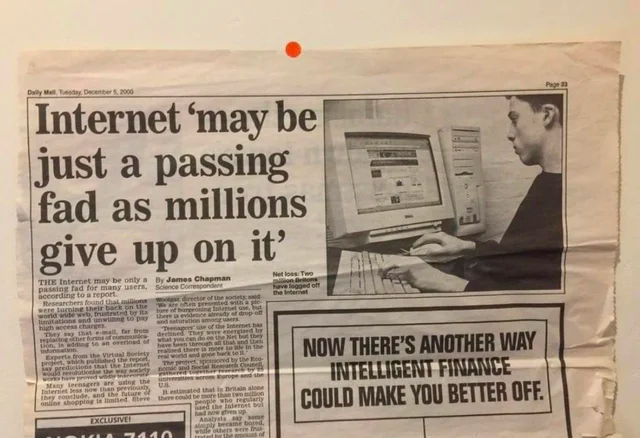
Of course, they didn’t get it: There was hardly an internet to get! The technology’s full expression was still years away, yet many — like our writer friend James Chapman in the image above — made a snap judgment anyways. And now he pays the price (by looking like a fool two decades later). If you’ve made a judgment about the Metaverse already, I urge you to retract it. Let this essay sway you. Give me a chance to change your mind.
Because, as things currently stand, there is no Metaverse to even judge! Nothing exists that is really even close to the Metaverse. Like the internet did, the Metaverse needs a lot more time to develop before it makes practical sense, before you can see it — or perhaps it’s better to say, before you can touch it.
“The Metaverse” we have now, that you hate so much, that all the Zuckerbergian schmucks in Silicon Valley won’t shut up about, isn’t really a Metaverse at all. It is nothing more than a series of well-marketed virtual worlds.
I’m going to use that term a lot, virtual worlds, meaning navigable, multidimensional environments separate from our “physical” shared reality on Earth. We can find these virtual worlds everywhere, both in cyberspace and in our heads. When you see a commercial for Meta’s weird legless virtual environment, Horizon Worlds, that’s not actually the Metaverse, but one single virtual world.
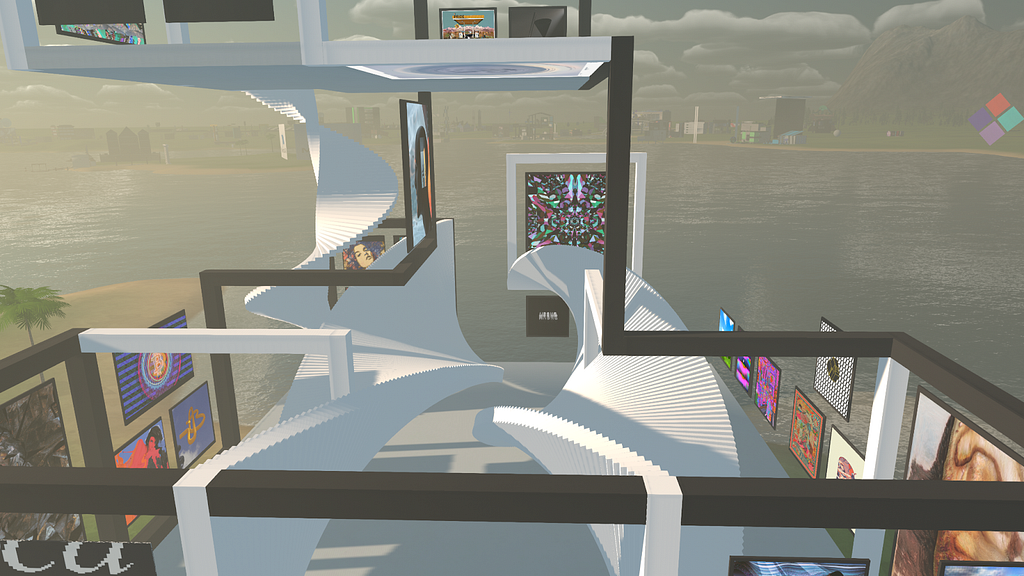
Virtual worlds have always been a primal, essential tool for human survival. We experience them literally all the time. Our imaginations themselves, for example, are evolutionary developments which allow the creation of unreal environments and situations, i.e. virtual worlds of our own internal devising. These mental realms, which are adjacent to our shared reality, are necessary for planning escape routes, predicting dangers, and anticipating the future. Our identities, our perspectives, the stories we tell ourselves about who we are and what fulfills us, are all, in essence, virtual worlds.
When you’re in the shower mentally renegotiating your response to that bully at Eliza Stepkin’s birthday party in 6th grade, you’re alone in that virtual world; it does not connect to the imaginations of others. When you and three friends are on a Fortnite squad together, you’re all alone in that virtual world, too; it does not connect to any other non-Fortnite experiences elsewhere. Even when we can move through them alongside our friends, the virtual worlds themselves aren’t connected to each other in any meaningful way.
Which is basically like having websites without a World Wide Web to link them together. Without the internet there could be no search engines. No backend collaboration between web products. No clicking!
Now, imagine a central network — front and back-end — which permitted and incentivized the creation of newer, better, more collaborative virtual worlds. Such an environment would be both navigable and shared, so we’d all be walking around in it together, in-real-time, “clicking” back-and-forth between entire universes like we click from Twitter to Google to Twitter, back to Twitter, to Amazon, and then, ahem, again to Twitter. Ideally, our sum capacity for expression, experimentation, and empathy would increase exponentially, a result of the realistic interpersonal contact we’d now be having throughout our time online.
If you think this sounds a lot like some hyper-advanced internet, well, yeah, that’s the point. By upgrading the intricately-linked internet into a concurrent, always-on, interactive environment, the Metaverse would allow us to experience all the internet’s countless possibilities in real-time, all at once, together. The ideal Metaverse is a vast and unruly, crowd-sourced amalgamation of ideas, entertainments, distractions, creations, physics, experiments, and relationships all squished against one another in a way we can experience together. That is the Metaverse, baby! The internet made social, made three-dimensional! A second, shared virtual world splayed over our own.
Part 2: Our Internet’s Loneliness Epidemic
Humans are social creatures; we are healed by each others’ presence and poisoned by its absence. In the episode,“Why America is Suffering a ‘Friendship Recession,” on his podcast Plain English, Derek Thompson — staff writer at The Atlantic — discusses the rise of loneliness over the past decade. He mentions that, “15% of men said they had no friends at all,” and that “one-fifth of millennials say they have no friends. That is higher than any generation in history.”
“Modern society is conspiring to make all of us a little more lonely,” Thompson says. “Streaming TV and movies are great, but spending 10 hours a week watching them makes us more alone. Smartphones are amazing devices, but they allow us to entertain ourselves alone…Remote work is a godsend for many many people, but it also makes us more alone…When the process of dating moves from schools and offices and bars to individuals texting each other on couches, it makes us more alone.”
You can probably look around you — at friends, workplaces, political spheres — and identify a host of social and mental issues that this widespread aloneness has exacerbated.
Regardless, it’s not like we’re going to stop using the internet. It is far too intertwined with the way we live today. The ideal solution would be a version of the internet that offers a greater capacity for empathy and community-building. A functional Metaverse — albeit one that does not fall into classic, capitalist, cash-trap pitfalls — could do just that, allowing us both the internet and the meaningful presence of imagination at the same time.
We need this version of the Metaverse, but there are titanic forces working everyday to keep us from thinking it even remotely possible. Market makers want a lesser Metaverse, one they can own and control, even if it means negating the technology’s grandest possibilities. That is why large actors like Meta want to make sure we equate them with the Metaverse itself.
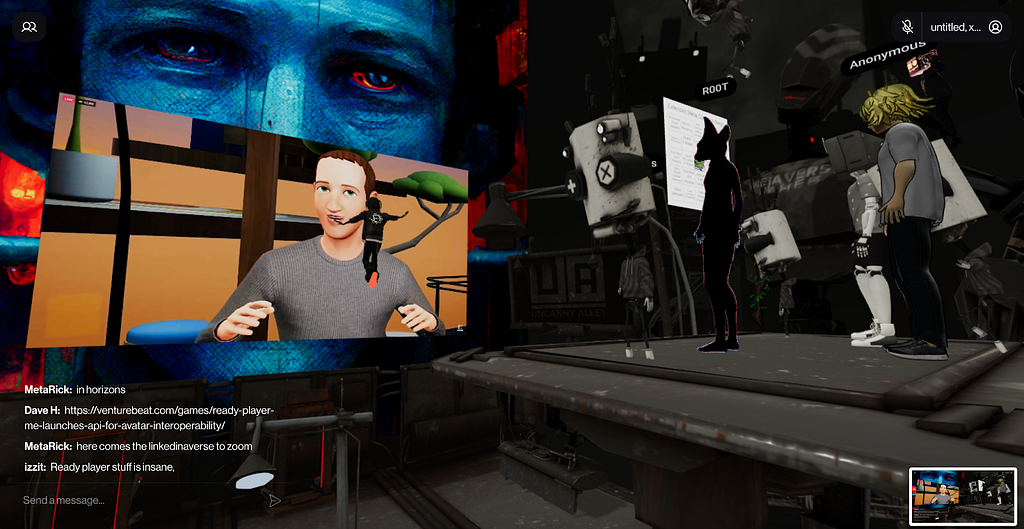
Too much is at stake, however, to let that happen further.
The best way to combat such predatory forces is by revealing to the largest possible audience how transformative an open Metaverse could be. Radical artistry, scientific discovery, consciousness experimentation, basic primary education — all could be their most accessible and beautiful versions in an open Metaverse.
Brian Trunzo, Metaverse Lead at Polygon, told me, “Much the same way our ancestors swam from the ocean and eventually stood up on two legs, the Metaverse is evolving into what it is meant to become. And similar to this process, the evolution of the Metaverse will be a gradual response to the forces against which it measures itself.” Metaverse builders will push the technology one way, we users another, and special interests will stomp on it from the top-down, altogether giving it a unique shape.
We need to shape a strong value system in the Metaverse, not an arbitrary one. And yes, integrating insights and lessons from the Metaverse into the real world will be its own hurdle, not to mention doing so in a timely manner. But we’re not without guidance. There’s so much we can learn from simply studying the Metaverse’s history. If we hold tight to the past, learn from its missteps, and note its victories, we come to understand that, yeah, if we’re going to have a hand in shaping this Metaverse, it’s vital we learn about all the shapes it has taken before us.
Part 3: A Brief History of Virtual Values (in 6 Acts)
I. Maze (Network)
The year is 1975, and Maze is a problem. So much so that MIT Directors have designed and implemented a kill-switch program to snuff out Maze on any computer it dare appear. The Computer Sciences laboratory at MIT only has so many IMLAC PDS-1 mini-computers (to be used for research only), each an incredibly expensive and highly-sophisticated piece of technology. They’re so in-demand that students/faculty must reserve times well in advance if wanting to use one. They are not to be used for…used for…COMPUTER GAMES!

Despite the daytime demand for computer time, the lab is never livelier than in the dead of night. MIT’s many coders and engineers converge here en masse during the witching hours to shoot each other in the virtual eyeballs. Maze is the game they obsessively play, night after night. It’s all anybody wants to use the computers for anymore.
Maze is simple. Moving freely within a blocky, green-and-black, 16-square by 32-square 3D labyrinth, players have only one directive: To find, shoot, and kill their opponents while staying alive themselves, amassing points in the process. Rudimentary as the game may be, it’s no wonder Maze is often called the first first-person shooter.
The Maze problem is all Greg Thompson’s fault (thanks to Richard Moss at Polygon for pointing that out, plus so much more)! Thompson invented the game years earlier with his high school buddies, Steve Colley and Howard Palmer, during a NASA summer coding course. He brought the program to MIT and enlisted Dave Lebling — a master programmer whose text-based adventure games would one day redefine the videogame market — to help build Maze into something that could proliferate throughout campus.

Initially, only two computers could play Maze against each other and only if they were physically connected via serial cable. With Lebling’s help, that number grew to eight. And then the cables became unnecessary; any computer connected to the central MIT network could play together, regardless of physical proximity.
Pretty soon, there were Maze contests all throughout campus. A hierarchy of skill developed. Everyone knew the best players, but the best players thirsted for a new challenge. The Maze source-code was reconfigured so that the game could run not just on MIT’s internal network, but on ARPANET, the U.S. Department of Defense’s nation-wide precursor to the internet. Finally, Maze could spread around the country.
And it did.
One day, a massive crowd gathers to watch MIT’s Maze elite take on champions from UC Santa Cruz on the Pacific coast. It’s a cross-country rivalry of a kind never before seen. A single virtual maze contains players from opposite ends of the United States, exchanging information — positioning, commands, and gunshot wounds — while over 3000 miles away.
It might seem positively paleolithic by our modern standards, but just like that, the first virtual world was born.
II. Habitat (Morality)
The year is 1986, and a weapon of mass destruction has fallen into the wrong hands. This isn’t an issue for the White House or Kremlin, however, but for a virtual society being played out on a series of Commodore 64 home computers. Within the tightly-controlled, virtual environment of Habitat, an unparalleled destructive force is threatening to tear the game apart.
Habitat was a flagship product for LucasFilm Games (later LucasArts). It was also way ahead of its time. Within this sprawling, side-scrolling, role-playing game were all the seeds of a fully-interactive, always-online virtual world. Up to 20,000 “avatars” could exist in the game simultaneously, able to converse and interact with anyone they happened across. Nobody had ever used “avatar” in an online context before.
At this point, Habitat remained in testing, though testing in this sense didn’t just refer to graphics or programming. What was far more important was not how the game ran, but how the game was used. How were people acting towards each other? Could they be trusted to behave properly in a world with few rules and no consequences? Could operators govern morality inside Habitat’s society, and, more importantly, should they?
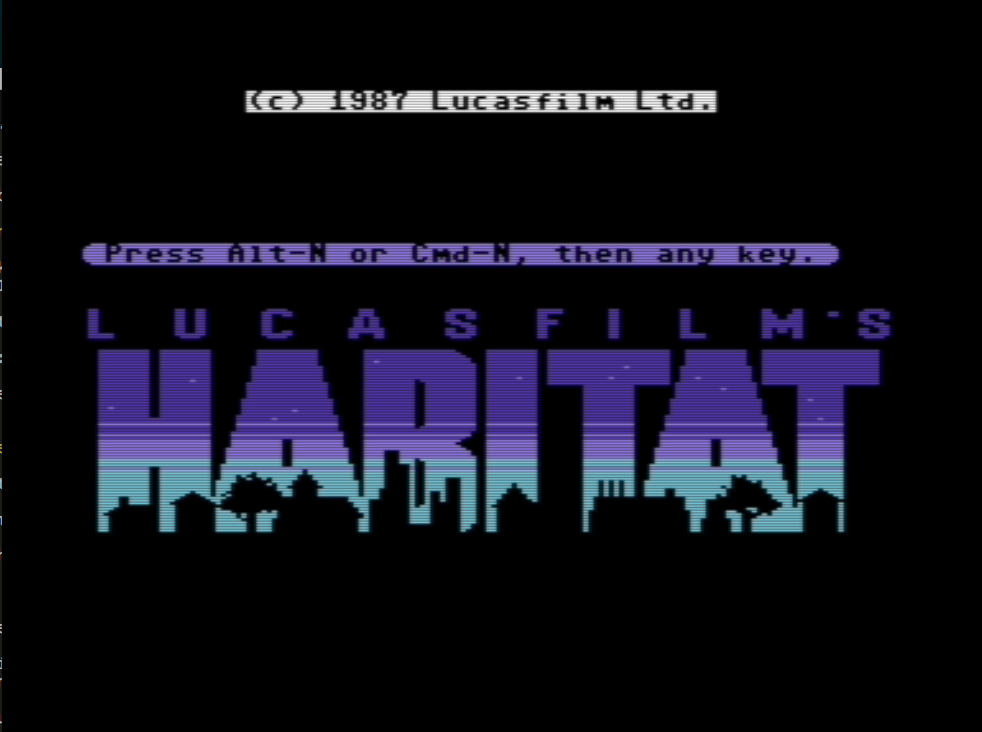
In their 1990 article, “The Lessons of LucasFilm’s Habitat,” two of the game’s co-creators, Chip Morningstar and F. Randall (Randy) Farmer, spoke at length about the tribulations of this pioneering first foray into true virtual worldbuilding. Of chief importance was an in-game event called The Dungeon of Death.
They wrote that, “For weeks, ads appeared in Habitat’s newspaper, The Rant, announcing that that Duo of Dread, ‘Death’ and ‘The Shadow,’ were challenging all comers to enter their lair…Two system operators were logged in as ‘Death’ and ‘The Shadow,’ armed with specially concocted guns that could kill in one shot, rather than the usual twelve. These two characters roamed the dungeon blasting away at anyone they encountered. They were also equipped with special magic wands that cured any damage done to them by other Avatars, so that they would not themselves be killed” (page 17).
Their carefully-constructed experiment with the Dungeon of Death, however, soon spiraled out of control. Human error led to those all-powerful artifacts — gun and wand — falling into the hands of a normal player. Like when Prometheus stole fire and gave it mortal men, the Gods on Habitat’s Olympus freaked out. In theory, it would be easy enough for operators to forcibly remove the items from the player in question, but that would mean betraying the game’s cardinal rule: Non-intervention.

Fortunately, a deal was worked out between Habitat operators and the player, a simulated ransom situation that restored the game’s natural order. Mortal men willingly returned fire to the realm of the almighty. But how could developers rely on such happy outcomes in the future? What if the death-dealing weapon fell into hands more like the Joker’s than the Batman’s? In any virtual world possessed of size and scope, there will always be a segment of the population interested in chaos. As Michael Caine says in 2008’s The Dark Knight, “…some men aren’t looking for anything logical, like money. They can’t be bought, bullied, reasoned, or negotiated with. Some men just want to watch the world burn.”
Morningstar and Farmer and the rest of the Habitat operators got lucky. Human decency successfully stood in the way of apocalypse. Would it do so again the next time?
III. Snow Crash (Logical Conclusion)
The year is 1992, and Neal Stephenson has just prophesied the future in 559 pages.
The novel in which he did so, Snow Crash, is AWESOME. Impressively imagined, impressively written, impressively well-researched, it landed on Time magazine’s list of 100 all-time best English-language novels written since 1923 for a reason. The extent to which Stephenson, in Snow Crash, is able to bring two parallel sci-fi worlds to life — one a hyper-capitalist hellhole where megacorporations have taken the place of nation-states, and the other a virtually-lawless, computer-generated environment — is majestic. Mind you, most so-called “writers” can hardly string together a sentence, let alone invent an entire dystopian future, let alone invent two!
Back before the book was published, while brainstorming a name for his aforementioned virtual environment, Stephenson could not possibly have known how far-reaching his invention would be. Snow Crash was published in June of 1992, and within its pages, the “Metaverse” as we know it was born.
Stephenson literally coins the term Metaverse in Snow Crash, using it 111 times throughout the book (117 including in the acknowledgements; I counted). And as has been noted again and again and again and again, Stephenson didn’t just invent the nomenclature of the Metaverse, he predicted practically everything about it.
Within his ideological behemoth of a novel, Stephenson manages to expound upon Metaverse architecture, Metaverse real estate, Metaverse politics, Metaverse graphical and technological limitations (as specific as whether buildings and other objects are collide-able or not), Metaverse interactions, Metaverse ownership, Metaverse facial expressions, IRL Metaverse use-cases, and most importantly, Metaverse values (Stephenson also seems to have inspired the invention of Google Earth), and all in ways which feel prescient, if not outright prophetic.

The book is practically required reading for anyone interested in Metaverse development. Habitat may have been probing virtual morality years before Snow Crash was released, but because it was a real game populated by real users, the scope with which Habitat could explore was limited. Stephenson — along with his initial artistic and ideological collaborator, Tony Sheeder — leveraged the comparative freedom of working in a purely fictitious environment. Snow Crash asks questions like: What if the entire Metaverse were controlled by a single bad actor? If a hyper-capitalist Metaverse is a certainty, then what does advertising look like? Can danger materialize in an environment where death is impossible? How is value delineated? What about social status? To what extent can prolific programmers use the Metaverse as their personal playground?
Habitat wrote an employee handbook for virtual worldbuilding, but Stephenson might as well have written its Bible.
The book would have an outsized and permanent effect on the development of most every virtual world thereafter. Second Life creator Phillip Rosedale (more on him in a moment) cited Snow Crash as a crucial influence. When I spoke to Jin Madjin — co-founder of both Webaverse and the Metaverse development collective M3 — he told me specifically to read it when I’d asked about crucial texts for those looking to learn about the Open Metaverse.
The sheer amount of work Stephenson put into Snow Crash is evidenced by the fact that we still use the words he invented. We still debate his ideas. And every forthcoming virtual world from 1992 onwards has had to reckon with all the STOP, YIELD, and WARNING: BIOHAZARD signs Stephenson erected on the road to a functional, engaging, tangible Metaverse.
IV. Second Life (Identity and Relationships)
The year is 2003, and Philip Rosedale wanders alone through a world of his own devising. This place, an as-of-yet uninhabited but endlessly-scalable virtual environment, is the loose realization of a childhood dream. “As a kid,” Rosedale told me, “I was really inspired by the idea that the space inside the computers, especially if they were networked, could be this kind of vast new terrain that you could build in and on…You could completely redefine the laws of physics and then create an empty sandbox that everybody could go into.”
The virtual world Rosedale would eventually conceive, design, and build (with his company, Linden Lab) was called Second Life. “As a child, I was a maker,” Rosedale said, “…I was always building things and showing them to people, so I think naturally I was like, ‘You know what would be cool? A whole world where people could build things and show them to each other.’”

Such a world would theoretically require unlimited size. It would need a built-in economy to encourage and reward innovation. As opposed to Habitat, there couldn’t be any specific goals, tasks, quests, or outcomes that weren’t prompted by users themselves. People would simply sign-up, create an avatar, and enter the world. Once there, they’d find an endless array of resources and nobody saying what to do with them. In effect, they could do anything.
And they have.
Although not technically the first true virtual world (Habitat, Cyworld, There, Active Worlds all preceded it), Second Life remains the nearest facsimile we’ve ever had to a Metaverse like the one Stephenson imagined. It boasts a vast breadth of experiences. It has a startlingly robust economy. According to Wikipedia, “In September 2006 Second Life was reported to have a GDP of US$64,000,000,” while a decade later in 2015, “Second Life had an estimated GDP of $500,000,000, higher than some small countries.” Some Second Life users manage to earn impressive incomes off virtual real-estate sales, while others invent and license products as intricate as in-real-time translation apps.
Rosedale, like Neal Stephenson before him, envisioned and feared a Metaverse future where users slithered in and out of different identities depending on the day, the context, and their mood. “One of the worries I always had was that everybody would have multiple identities in Second Life. They would have the bad guy identity and the good guy identity, and they’d go log in to whatever they wanted depending on what they wanted to do.”
He recounted with some surprise that, “Second Life identities actually tend to be very rich and very robust and persistent. That is to say, you can change your gender in a second in Second Life, but you don’t….Your identity, just like in real life…is tied to your ongoing relationships to those who are witnessing that identity that you’ve created.”
Marriages and romances are also quite common in Second Life, as are purely sexual arrangements. And for the most part, the dynamics therein mirror those in the real world. Rosedale posits that, “I think that as we create Metaverses which are truly live, the subterfuge of projecting a false identity, or an aspirational or a performative identity, is going to be whittled down.” In other words, it’s unrealistic to keep up a charade when you’re tasked with keeping it up in real time.
For almost two decades, Second Life has been an instrumental laboratory for testing such hypotheses. Much of what we know about virtual relationships stems from those we’ve been able to see play out in Second Life. Many of its users have been consistently building their Metaverse identity for years. Thus, Rosedale’s opinions strike me more as conclusions than conjectures.
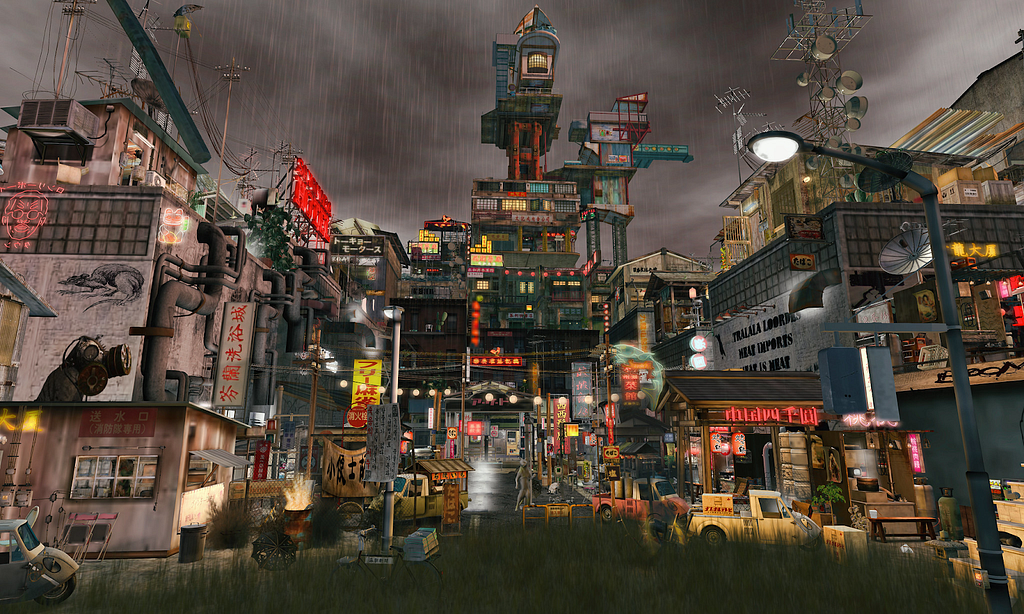
Back in 2003, however, in the weeks before going live, Rosedale’s virtual world remained mostly empty. It would have been small, lacking users to buy land and build properties and pioneer new frontiers, to open stores and trade goods, to exchange hello’s and form relationships and thus desire places to spend time together. It was a world with limitless possibilities, but unclaimed possibilities are as shapeless as lives unlived. The “life” in Second Life came from people, as it always must.
V. Myspace and Me (Socialization)
The year is 2008, and no Mom, I don’t care what you’ve heard about him, I’m going to keep hanging out with Donnie Panteleo.
I’m 12 years old, and understandably, there’s very little freedom in my life. My mom stays at home, so I’ve never once had free reign of the house. “Time to do your homework, Max! Time for dinner, Max! Time for bed, Max!”
Meanwhile, Donnie, who I considered one of my closest friends, is almost like my evil twin. Though we’re aligned in interests, intelligence, and sensibility, his parents are never around, so hanging at his place means access to a lifestyle unlike any I’ve known before. We leave his townhouse whenever we want, to do whatever we want. Nobody asking “WhO eLsE wIll Be CoMiNg To tHe MoViEs?” Or keeping us from stuffing our faces at IHOP because, “We DoN’t EaT oUt On ScHoOl NiGhtTs.”
And that’s when it happened.
It’s one of those memories which remains crystalline even now, befitting the momentous consequences it contains. I’m 12 years old, and we’re in Donnie’s bedroom. I’m laying back on the bed shuffling a deck of cards, and he’s sitting at the computer there. He looks up, eyes twinkling, and says, “Yo, come check this out.” I bounce off the bed and over to his side.
He’s like, “I have an idea. Let’s make a Myspace.” And my fate was sealed.

It’s what we spend the rest of the afternoon doing. Taking photos from our Razr phones and getting them onto the computer (no easy task; I think it required an SD card). Choosing backgrounds. Picking out music. Copy-and-pasting HTML from Google so that we can have surveys and Atari emulators plastered on our pages.
Back then, social media seemed perfect. I’m well aware of how deceptive memory can be, but I remember this early Myspace era being such harmless fun, a free and exciting kind of social media I was lucky enough to catch a glimpse of before it was napalmed to death by capitalism, cyberbullying, eating disorders, and Facebook.
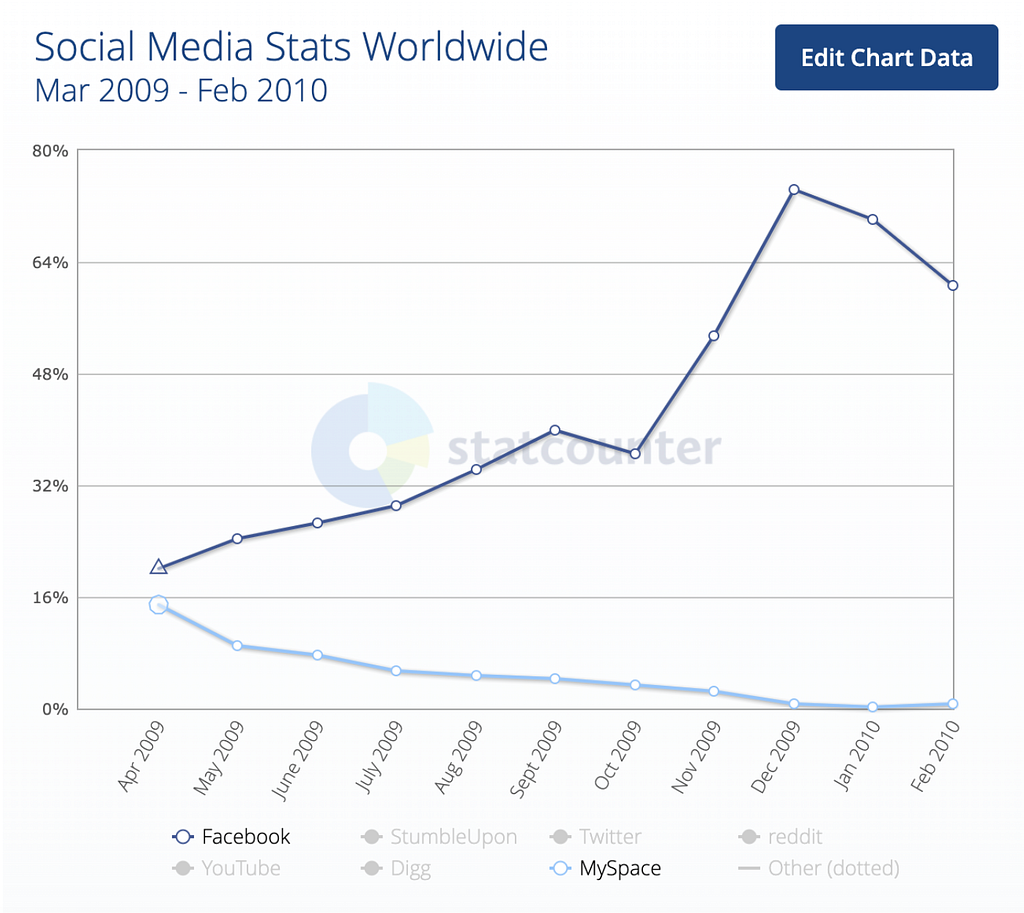
For me and so many other young people, this late-aughts period of social media discovery was our first revelation that a digital ecosystem could mirror, with incredible specificity, the social schema that dominated our lives otherwise. A middle school social structure isn’t all that complicated; it can be pretty easily ported, 1-for-1, into an online setting. With AIM (AOL Instant Messenger) and Myspace the two pillars, there emerged an entire subterranean social universe that only other 12 and 13-year-olds like myself could hope to access or understand.
When I spoke to Philip Rosedale, he posited that one of the biggest differences between social media and virtual worlds was, “Latency. And that is: What is the delay between your submitting some piece of interaction to the world and your getting a response back from the other people? In the case of social media, that delay is substantial, it’s anywhere from seconds to days.”
Objectively, he’s right. But he also misunderstands how preteens like myself used social media in the late 2000’s. There was no latency. Everyone was online all the time. Posts were liked without delay. Inside jokes spider-webbed across status updates. Our idiosyncratic communication style leveraged a complex chain of applications, each with their own norms and taboos: AIM, Oovoo, Myspace, etc. We had a social economy. We could pinpoint who had visited our profiles and for how long, making changes on our pages to reflect this. Social media was like the Text-Based Adventure Game precursor to the Metaverse, with friendships and romances and fights and every other defining social metric of an adolescent’s life taking place all at once, in public, in real-time.
The fact that we could not physically move avatars around a shared space seems besides the point. Because what is the Metaverse meant to be if not a real-time digital counterpart to our IRL lifestyle? My peers and I spent our adolescence unwittingly forging the conceptual basis upon which all future internet relationships would need to adhere. If and when we Millennials go about forging real digital identities, we will be leaning upon the skills and norms we developed when we were children discovering a new world.
Thus, whenever I see a Millennial getting the ick when it comes to discussing the Metaverse, I’m somewhat shocked. Because weren’t they there too? Didn’t we all exist in our own little middle school Metaverses? Maybe I’m way off the mark, but the underlying experience of this whole “virtual world” thing doesn’t strike me — a Myspace millennial — as all that unprecedented. After all, I spent a large chunk of my childhood there.
VI. Gaming (The Masses)
The year is 2010, and I’ve just been grounded at age 15. Again. This is the second time my cocksure carelessness has led to getting caught like this. Boy, my father really let me have it. Mom did the whole “not mad, just disappointed” thing. Both act like this was some kind of grand betrayal.
My mother said I was “addicted,” and honestly, she wasn’t far off the mark. Because you don’t spend ten hours a day playing World of Warcraft, shirking off your homework and your chores and your circadian rhythm, unless it’s got a serious hold on your brain. It was all I wanted to do. It was all I cared about.

Internally, my addiction seemed justified: I was merely prioritizing my existence in some other world, with its own set of responsibilities and commitments, over reality. It’s pretty easy to get to this point when playing Massively-Multiplayer Online Role-Playing Games (MMORPGs) like World of Warcraft, games which strike me as a clear forerunner to the kind of Metaverse many of us envision in our heads. Enormous spaces where players are allowed to wander, defining their interests and identities as they do so, where honing relationships is as important as honing skills, and which include boundless opportunities for experimentation and exploration in groups. They’re all basically steroid-injected versions of Habitat. Even 40 years after LucasFilm Games invented that virtual world model, it still works.
Case in point, I spent a majority of 2009–2010 living within World of Warcraft, and by that I mean whatever time I wasn’t playing the game, I was thinking about it. I was messaging my guild leaders. I was reading raid guides and watching strategy videos. I was very concerned with my DPS. I was living part-ways in a virtual world.
It seemed totally natural for my 15-year-old self to exist in this bifurcated way. And thus, I believe that the Metaverse is not, in reality, as abstract or intimidating a concept as many people seem to think it is. All the time I spent in World of Warcraft is proof that it does not take an unreasonable level of institutional effort to convince someone like me — daydreamy and obsessive — to port part of my personality into a world behind a screen.
Videogames strike me as a perfect kind of palate-preparing appetizer for the Metaverse, a demonstration of just how easy it is to care about one’s invented digital identity. And this will only get easier as games become increasingly more immersive and sophisticated. As graphics (like this clip of virtual Amsterdam from 2022’s Call of Duty: Modern Warfare 2) continue getting better and better. As one’s customization options become staggeringly more intricate.
And, crucially, as the market continues to expand.
The videogame industry is already a behemoth, and it’s growing every year. According to Techjury, “There will be 3.32 billion people playing video games by 2024,” which represents 500 million more players than in 2021, or 43% of the world’s total predicted population. “The global gaming revenue will be around $337 billion in 2027.”
Hell, just Fortnite, the cartoonish 3rd-person shooter made by Epic Games, “brought in more than $9 billion total for Epic in 2018 and 2019” according to The Verge. This despite Fortnite being a free-to-play game. The Fortnite model, also known as the “freemium” model, is fascinating for our purposes because it exploits the natural psychological pull gamers have towards virtual identity-crafting. Generally speaking, these games — like Fortnite, Overwatch 2, Rocket League, or Clash of Clans (yes, mobile games count) — are fully free to download and to play. But within are countless opportunities to pay small amounts of money — such microtransactions are usually no more than ten dollars — in exchange for a host of cosmetic items to differentiate one’s character: skins, voice effects, poses, dances, etc.
That the freemium model has become so prevalent in the videogame industry is a powerful suggestion that the conceptual Metaverse is appealing. People will look you in the eye and say they could never imagine living in the Metaverse, but then turn right around and race home to play Minecraft with their friends, which they do together every Wednesday night. They’ll say they don’t understand the appeal of existing as an avatar in a virtual world, but then will spend five bucks on a Halloween-themed pumpkin costume for their Overwatch character. There’s no real difference between these activities and those we’d do in the Metaverse except that videogames have long been normalized and the Metaverse still seems weird.
But if we look deeper into 2021’s top grossing game in the United States, it’s pretty clear that Metaverse living isn’t weird for everyone. Maybe you’ve heard of it: Roblox, the kid-centric virtual world everyone’s little cousin loves. As per Wikipedia,“As of August 2020, Roblox had over 164 million monthly active users, including more than half of all American children under 16.” I myself have watched a schoolroom full of 6 to 10-year-olds collectively go silent as they were allotted their 30 minutes of daily Roblox time. Nothing seemed to exist outside of the game (unless they wanted apple juice or something).
But even calling Roblox a game feels demeaning; it is an adept virtual world in its own right. Buying, wearing, selling, trading, and creating cosmetic items is a core part of the experience. As is using the underlying open-source game engine to create mini-games and worlds adjacent to the main game, which players can bounce in and out of. “A total of 20 million games a year are produced using” this tool (Wikipedia). Roblox really is like a kid-ified version of Second Life.
And let’s again mention that HALF OF AMERICA’S YOUTH ARE PLAYING IT! Ten years from now, both Metaverse technology and those kids’ incomes will have all developed substantially. So tell me: Why would these many hundreds of millions of people have any trepidation about jumping headfirst into the same sort of Metaverse they’ve been using their whole lives?
The kinds of quasi-Metaverse norms developed in these worlds have already started seeping out into kids’ actual lives. Take this descriptively named article from Polygon, “Fortnite is Free, But Kids are Getting Bullied Into Spending Money,” which details the social pressures of purchasing and equipping Fortnite skins, for proof. The dividing line between the virtual and real worlds is not, for these kids, as strong as it may be for you or I. And my millennial brethren already have a much weaker dividing line than, say, boomers or Gen-Xers. With each passing generation, the digital and physical worlds are becoming further linked. I wonder what might happen if/when people use the two so interchangeably that they become indistinguishable.
Part 4: Where Do You Think We Are Today?
Philip Rosedale told me a somber truth: “Nothing has changed since SecondLife, and I’m going to defend that. No new technology has improved what I’m about to say: SecondLife is an experience for only a single digit percentage of people [who] are willing to become an avatar for the purpose of socializing and in particular for the purpose of meeting new people.”
Despite the advent of Roblox and other virtual worlds, the Metaverse is not “here,” not at all, and not in the way we spoke about at the beginning of this essay.
There are virtual worlds galore — Jin’s Webaverse is one, and there’s also Decentraland, Sandbox, Somnium Space, Aria, MONA, Hyperfy, Roblox, Club Penguin, Cyworld, Horizon Worlds, SecondLife, and countless others — but these programs are each built to serve a specific purpose and a specific audience. Their experiences are all trapped within themselves.
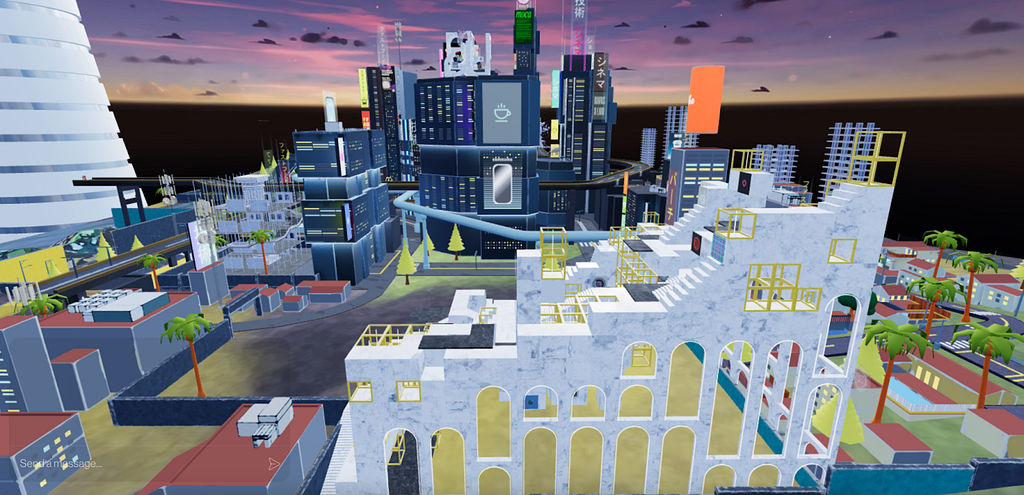
In Snow Crash, the Metaverse is a public good, an analog for the internet itself where you navigate around to different experiences (webpages) from within a single, underlying Metaverse protocol (World Wide Web). Everyone — be they developers or laypeople — would have a vested interest in seeing this type of Metaverse remain open, interesting, and accessible because its effects touch every aspect of life outside of it, directly or indirectly.
Today, virtual world technology seems appealing to very few people. Most people just don’t get the concept, or why it’s interesting, or why they should care. Jin has obviously had similar experiences, which is presumably why he told me, “I’m not really as focused on the most average kind of consumer…The shows that portray these alternate worlds, and all sorts of games that break away from reality, I don’t think that’s super appealing to mainstream audiences.”
But we should remember that the early internet was also used primarily by professionals or certain enthusiasts for specialized purposes. Only when consumers could easily access the internet, find a boon of enriching content therein, and see its effects on their outside lives, did laypeople show interest in using the internet and thus shaping its trajectory.
In our interview, Philip Rosedale consistently tempered my enthusiasm with a sobering opinion about the state of Metaverse technology today. When discussing what would be needed for “humans to communicate, particularly in groups, and particularly with strangers — not their friends from high school but with new people: their boss, their potential customer,” and in real-time, which in Rosedale’s opinion is the lowest bar for a functioning Metaverse, he pointed to two necessary developments:
- “Nearly-perfect audio…and
- “Nonverbal cueing of the sort that we’re able to see from each other right now.”
There’s a big difference, he explained, in literally leaning towards someone and leaning restfully away from them. Such minute actions are replete with subconscious information. But “to convey that nonverbal cue…I need to know where your ass is. There’s no system that can tell me that and no system coming. There’s not even any hope of that system yet.”
And when that system does come, it likely will remain inaccessible to the vast majority of potential users. Rosedale said, “The only mass deployment of technology worldwide that has truly influenced the whole world is the smartphone…Whatever we use to modify the nature of live presence and live communication, it has to be something which, similarly, can reach five or sixbillion people.”
It also will not reach all people at the same time. It’s important that we sidestep our Western bias and recognize that, while the Metaverse still seems eons away from adoption in the West, commercial Metaverse interest in Asia has outpaced that elsewhere.
As per JingDaily, “Over 400 [Chinese] companies, including Tencent and Alibaba, have trademarked several terms related to the [Metaverse] buzzword… The hashtag [#metaverse] has 340 million views on Weibo…[and] China’s big telecoms carriers are also laying out plans to feature the metaverse: China Mobile, China Unicom, and China Telecom all partnered with several tech companies to form China’s first industry group dedicated to the metaverse.”
It’s not that the technology in Asia is more advanced, but that there is already public and private positioning for when the aforementioned technical hurdles are cleared. As interest rises, economic and political forces — intertwined as they are in China — move quickly to control terminology and technological bottlenecks. China’s government is likely seeking avenues to maintain power over the Metaverse just as they have on NFTs: the State allows their initial sale and ownership, but not the transfer from one party to another.
But this only further clarifies that — still — there is no worldwide consensus on a realistic timeline for when the Metaverse will take that next, largest leap from niche product to universal interest. This will require massive technological advancement, both in affordability and ease-of-use. But wherever and whenever it does happen (and it will happen), the values and norms currently in place will solidify as law. People generally have tolerance for the way something is when they’re first exposed to it. It’s when you start taking things away that they get ornery.
Which means that what we’re doing here, today, together, all of it matters. We’re setting the table for the day our diners arrive. And that’s not only a crucial point, it kind of clarifies everything.
Part 5: What Lessons Should We Take Forward??
Consider the historical development of the Metaverse not as a linear continuum, but as a single mammoth piece of marble being chiseled away by a sequence of separate sculptors.
An ideal Metaverse — one that avoids the pitfalls Stephenson laid out in Snow Crash — would remain a public commons, ever-expanding and ever-changing by default.
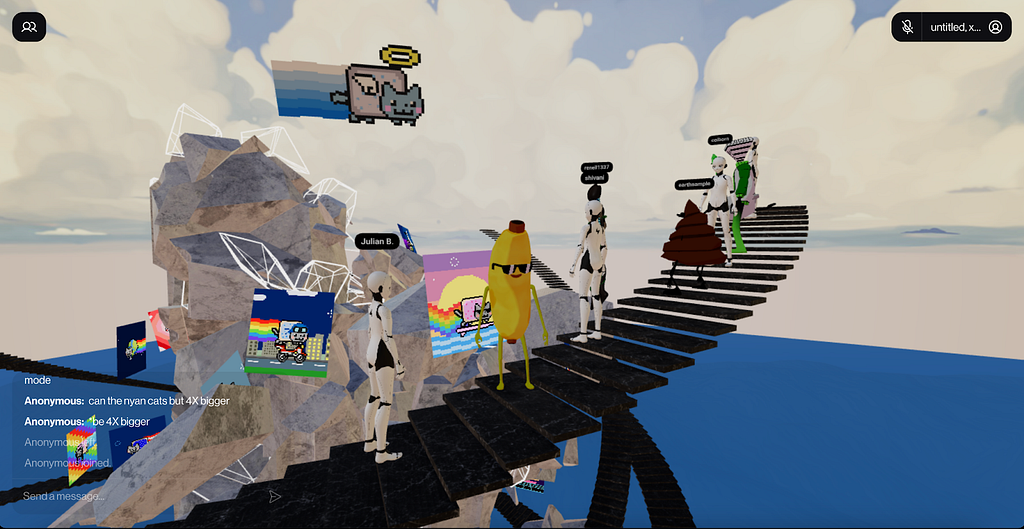
In such a space, where identity is inherently disconnected from the physical prejudices and geographic limitations of our shared reality, humans should prove much more willing to form larger, less-localized communities around their passions and personalities, just as people playing videogames are not concerned with the age, race, or backgrounds of the players around them, just their actions. And because these communities would be far more interconnected than they are in, say, Facebook groups where specific personality traits remain confined to their dedicated pages (you wouldn’t go posting about your love for Southeast Asian cuisine in a Tiger Woods fan page), echo chambers of belief will be much harder to maintain. The borders around these communities will be much thinner, subsidized with the kind of face-to-face, body-language-inflected, real-time interaction that makes IRL conversation so much more amicable and enriching than its internet-based counterpart.
But this can only occur in a fluid, open Metaverse where the borders between experiences are allowed maximum fluidity. A massive problem with social media today is that there can be no real multifaceted community building, nor can platforms flow into one another with a reasonable expectation of maintained interest, because each platform is incentivized to lock experience within itself. Twitter does not want users jumping into a Telegram group-chat. Telegram does not want us returning to Twitter with our refreshed findings.
The underlying network of the World Wide Web is amazing, but it does not yet offer the kind of superfluid transportative experience that an open Metaverse would.
The problem is that this kind of unowned, unmonetized Metaverse is a huge failure for business itself. The World Wide Web itself doesn’t generate revenue for any specific actor; it is simply the network we use to jump from monetized site to monetized site. The Metaverse is the internet’s evolution from a solitary and highly-latent experience to something collaborative and instantaneous. If you’re curious why a gargantuan megacorporation like Facebook would pivot — at great cost to its stock price — into Metaverse development, or why Chinese telecommunication giants would be positioning themselves for Metaverse dominance, perhaps this will clear things up: Mark Zuckerberg owns a powerful internet application, but if he corners the nascent Metaverse market, he could own the internet itself.
If you own the web, then all the Facebook’s and Google’s of the world work for you, paying tribute for the very right to exist on your platform. This is the “App Store paradigm,” and is quite similar to our current web2 power structure. When I asked Jin what his vision of a dystopian Metaverse future looked like, this is what he pointed to. “I would say the worst-case scenario is platform lock-in…in which [the Metaverse] is treated very much like a zero-sum game, and app stores become the primary driver of value for these platforms” where internality is more lucrative than interconnectivity.
Jin soon-after offered a counter-idea. “But if you develop things with the web philosophy, you’re developing things that are interoperable, built on an open standard, composable, and now work on many different devices.” And as noted in Jin’s Tweet just below, if Philip Rosedale “were to build Second Life today he would use the browser.”
jin on Twitter: “Listening to Building the Open Metaverse with @philiprosedale as a guest and he said if he were to build Second Life today he would use the browserWas nice to hear as someone that’s been grinding for so many years for the web to be taken seriously as a virtual world platform / Twitter”
Listening to Building the Open Metaverse with @philiprosedale as a guest and he said if he were to build Second Life today he would use the browserWas nice to hear as someone that’s been grinding for so many years for the web to be taken seriously as a virtual world platform
If you’re thinking, “Hey: Composable, diverse, interoperable Metaverse experiences built on an open standard are exactly what we’re looking for!” then my friend, you have hit upon exactly the conflict here. There is a seismic gap between what web2 companies like Meta want — a closed and proprietary Metaverse — and what is best for consumers, enthusiasts, and developers.
Enter: the Open Metaverse Standard.
“I think the Open Metaverse is very user-centric, whereas web2 is very platform-centric,” Jin told me. “If we just design around the user and their ability to have a self-sovereign identity — something that actually feels like it’s truly their own down to the lowest layer, the hardware layer — then that’s how I think we can plant the seeds to the best possible future.”
An Open Metaverse is built around one catch-all value: Choice. Identity, sovereignty, and privacy all are facets of choice. In Eric Hughes’ influential 1993 essay A Cypherpunk’s Manifesto, he notes that, “Privacy is necessary for an open society in the electronic age. Privacy is not secrecy…Privacy is the power to selectively reveal oneself to the world.” That selectivity is choice, and the ideal version of the Metaverse offers choice in avatar, choice in activity, in price, and in method of access, choice to leave one world for another at a moment’s notice with the knowledge that your Metaverse identity is your own property and not something owned at the base-level by Meta or Apple or Roblox or whomever.
Because of the sheer amount of interaction that would happen there, a single-owner Metaverse would be apocalyptic for privacy, providing an environment rife with opportunities for data-gathering and manipulation. Today already, data collection remains the greatest covert force for human psychological manipulation on the planet. In Philip Rosedale’s words, “Once you can hear peoples’ voices and see their gaze direction and their body movement with a headset…I’ll have a confident biometric on you, so I know exactly who you are,” Rosedale said. “And when you come back into my office, I know exactly that it’s you. That same information, that same tracking, can be used to discern things about you that are even much more invasive.”
Theoretically, if I hate how Meta’s Horizon Worlds gathers and monetizes my data, I can just stop using their Metaverse, right? But if the foundations of my identity — my name, my avatar, my assets, and my social groups — are all proprietarily linked to Horizon Worlds, then Meta is forcing my hand. “What do you value more?” they ask me, “Your freedom or your life?”

By deifying choice, an Open Metaverse ensures a free market down to the identity level. Unless you, and you alone, truly own the various aspects of your online identity, you will always run the risk of your assets being data-mined, dismantled, or seized outright. This same principle of self-sovereignty is what led to the creation of Bitcoin. At its core, cryptocurrency and permissionless blockchain technology offer full ownership of one’s assets that is not subject to the interference of any given bank or nation-state.
The Cardinal rule of cryptocurrency: “Not your keys, not your coins.”
A choice-first ecosystem needs to become an untouchable norm of Metaverse life: Not up for debate nor discussion. A sufficiently decentralized blockchain (like Ethereum) that backs Metaverse assets could be the potential key to maintaining individual autonomy. Because blockchain assets are untouchable except by their owner, no larger economic power can restrict access to those assets.
This isn’t just empty crypto-pandering, however: In July of 2022, Minecraft — owned by Microsoft — suddenly forbid the use of NFTs within their many client-owned servers. The claimed motivation for this banning was “The speculative pricing and investment mentality around NFTs takes the focus away from playing the game and encourages profiteering, which we think is inconsistent with the long-term joy and success of our players.” But let’s not be naive. NFTWorlds, an independent Minecraft server that sold plots of land as NFTs, had seen $163-million worth of transactions in 2021 alone, a substantial sum that circumvented Microsoft’s coffers completely.
The people who were most furious, and thus the loudest, about Microsoft’s decision were NFTWorlds users. They liked NFTWorlds. It didn’t threaten their long-term joy or success. They became accustomed to a certain experience and to certain norms, and when those were taken away, the affected users were most ready to revolt. But it’s hard to inspire that kind of fire in folks who enter into a thing unaccustomed to the freedoms it previously granted.
Therefore, we must demonstrate, in as many ways as possible, all the negative repercussions users would experience if a single entity, like Meta, controlled our Metaverse assets and identities. Reveal the detriments of a single-owner Metaverse in a way that centralizes all the freedoms it restricts. That’s how to provoke outrage. That’s how we protect the Metaverse norms and ethics we hold dear.
Part 6: Finding Humanity Inside The Grand Machine
The forging of a virtual identity without boundaries. The porting of creations and art and assets from world to world. The full smorgasbord of the Metaverse available at one’s command, sans restriction.
The Open Metaverse could facilitate a massive awakening of humanity’s collective consciousness; we could together experience the sublime, and rediscover connective parts of our psyche in ways we cannot expect from the internet today.
In many ways, unexpected, primal emotions like fun motivate us forward as a species. Fun should be our primary driver as we build the future we want. Unable to go outside, see friends, or be in groups during the pandemic, I, for example, became a muted, grey stormcloud. But through virtual world videogames, I could share experiences with my loved ones in a facsimile of real togetherness! So many nights I’d sit beside my roommate, four or five of our best friends in a voice-chat alongside us, and we’d play Call of Duty: Warzone together, all talking, all strategizing, all ribbing each other as if we really did share a space. As if we really were together.
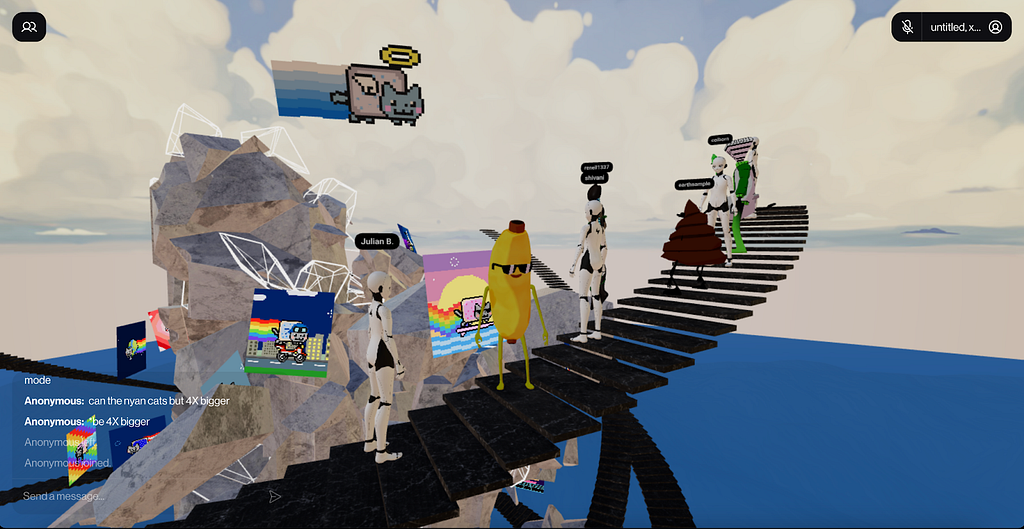
The mental salvation I found, however, cannot continue being gatekept behind a $500 console, a $60 game, two controllers, cell-phones, etc. That’s anti-choice. That’s the monetization of pain. That’s the difference between a virtual world and a Metaverse. It’s why the evolution from one to the other is so vital.
If salvation can be gatekept or price-gauged, it will be, and for heftier and heftier sums (once upon a time, the Catholic Church would literally sell “indulgences,” which absolved one’s sins…for money). Unlike during the dawn of the internet, economic giants today have both the funds and know-how to subjugate an Open Metaverse if it threatens their economic hegemony. Time is of the essence. Establishing norms now is priority #1.
So before a Metaverse Goliath properly emerges, we must communicate to the world that we’re better off with no Metaverse at all than a tightly-surveilled, controlled, and monetized one. If suicide is preferential to life under dictatorship, then dictators would only ever rule over a kingdom of ash. Choice, meanwhile, is Eden.
Society continues to adopt digitalization at a faster and faster rate. Communities can grow online to a point, but they are not sustainable without in-person connection. The Open Metaverse not only allows virtual connections to grow, but emphasizes strong physical connectivity between human beings. If we lose a sense of our real bodies in the Metaverse, we will lose our minds; the connection between them is too strong.
Right now, society-at-large seems to have very little interest in any kind of Facebook-ized “Metaverse.” According to CBSNews, Meta’s valuation fell by 75% in 2022. Horizon Worlds can’t attract even 200,000 users, operating at a nearly $10 billion dollar loss, so far. We know, of course, that Zuckerberg destroys everything he touches, and the Metaverse leviathans of tomorrow will be both smarter and sleeker. Apple’s foray into the Metaverse, for example, will no doubt be cool, coupled with expert-level marketing. They will lie to you via advertisements, and they will do so stylishly. Google’s Metaverse tech, meanwhile, will be as quick, slick, and easy to use as their other products. BUT WE MUST RESIST MEANINGLESS CONVENIENCE.
The ideal Metaverse experience cannot be built on any foundation BUT choice and individual sovereignty.
Preserving choice is not the end-goal, but the first, biggest, mightiest step towards creating what we want. Yes, this might mean sacrifice for a time, and you as the consumer choosing the shittier, slower alternative to Amazon. It might mean shirking off the most impressive present Metaverse experience for the sake of further-reaching values. But we mustn’t let the history of virtual worlds ossify because of our complacency, our laziness, or our shortsightedness.
So go follow Jin on Twitter. Read his XRdevlog for information about building the Open Metaverse. Experiment in Second Life, watch old Philip Rosedale Ted Talks, and follow him too. Use an open-source virtual world like Hyperfy or Webaverse and start having preliminary Metaverse experiences. Build your own virtual world! Build a network of like-minded individuals and crave a more sophisticated outlet for multivectored togetherness. Seek out whatever tools are not readily available. Plenty of folks will be beyond thrilled to indoctrinate you in the Cult of Metaverse, I’m absolutely sure. Discover for yourself the parts of the Metaverse that appeal to you, the problems you see the technology facing, and possible solutions. Keep a journal. Invite your friends. Read Snow Crash. Learn from history.
The Museum of Crypto Art itself has been steadily building our own vision of an Open Metaverse. Our Interoperability Manifesto explicitly declares our intention to build towards a fully interoperable version of the Metaverse, something encapsulated by M○C△ ROOMs, 3D architectural objects that function as exhibition spaces for crypto art. ROOMs are not confined to a single virtual world, and work seamlessly between them, their curation the product of gasless, Polygon transactions accessed via our M○C△ Multipass membership. We’ve written extensively about the intent of ROOMs — “Building Bridges for Architecture In the Metaverse” — as well as what an open, accessible Metaverse means for artists: “Crypto Art Dreams of the Metaverse.” Join our spaces, acquire a ROOM for yourself, and explore our Wiki for all the tools we offer for your own Open Metaverse frontiersmanship. And know that the M○C△ team is at your disposal regarding all questions about the Open Metaverse.
See you in there.